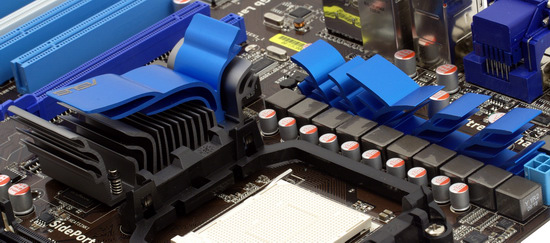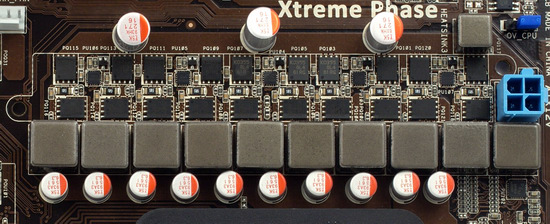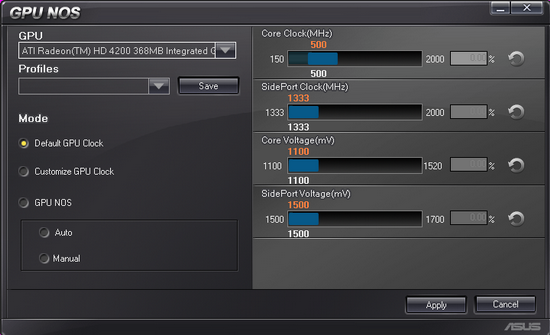Full-size motherboards with integrated graphics make up the most part of motherboards for Socket AM3. Some of them are rigged up to the maximum and even have two graphics ports (like the motherboard under review). For this reason, the target audience of such boards goes beyond users looking for money (and power) efficient configurations, who don't play games and thus don't need graphics cards. As for gamers, who always buy powerful graphics cards and discrete motherboards, some of them are quite conservative, thinking that no integrated solutions can suit them. However, the truth is that the integrated graphics core can be disabled at any time. Even when enabled, in no way does it deteriorate performance of a discrete graphics card in games. Besides, it allows connecting more monitors to your PC.
In our opinion, an integrated solution based on AMD 785G/790GX can be effectively used in games for physics acceleration along with the primary graphics card. (Or just computations that do not have to do with 3D rendering directly.) It makes no sense for motherboard manufacturers to advertise this today, because this issue has been around for quite a while, arousing scepticism at times. But the only blunder of GPU manufacturers is that the idea had been advertised much earlier than general standards of using GPUs in non-graphics computations appeared. However, today, when the DirectX 11 and OpenCL standards have been accepted by all major manufacturers, it is much easier for game developers to use these features.
Design
This motherboard has a spacious layout, because ASUS engineers did not make it narrower, unlike lots of ATX motherboards with regular chipsets. You can install graphics cards of any size into both slots, only your PC enclosure can be a restriction. It may look like SATA and IDE slots are too close to the axis of graphic slots, and cables plugged to the cards may abut on elements on the back surface of the graphics card. But the gap is actually big enough.
The cooling system looks quite original. Heat release of both the chipset and voltage regulator is actually not that high. (The latter has an excessive number of channels, by the way.) This allows for the artistic extravagances you can see.
But the engineers themselves state that it's not just artistic design, it also offers higher heat dissipation. Curly fin shape helps eliminate air stagnation. However, if engineers had to pursue only the practical aspect of design, their heatsink would have been cheaper and less intricate in shape.
The motherboard has a video buffer for the integrated graphics core: 128 MB DDR3-1333 (Nanya NT5CB64M16AP-CG).
CPU voltage regulator is designed with a wide safety margin. Each of ten phases (two phases are dedicated to Northbridge integrated into a processor) incorporates two highly efficient Low RDS (on) MOSFETs, 10 x 560 uF, and 3 x 270 uF solid-state capacitors made in Japan. We have no doubts that such design will provide stable power supply for processors with TDP up to 140 W, and overclocking will hardly be limited by the power supply system.
The bundle includes two SATA cables with metal latches (it has already become a tradition with other manufacturers as well, good news), IDE cable, Q-Connectors. But this motherboard comes with the standard IO shield with metal "tendrils" for grounding. The brand IO shield with a soft anti-static layer is more convenient to use.
Along with standard proprietary utilities to flash BIOS (and download the latest versions from the official website) and to monitor system parameters, ASUS offers several unorthodox utilities. For example, Turbo Key to turn the power button into a control that activates overclocking (you can configure overclocking parameters in a special profile), TurboV (counterpart of AMD OverDrive), and probably the most interesting utility -- AI GPU NOS to overclock the integrated graphics core.
As for third-party utilities, the bundle includes Norton Internet Security. Besides, the motherboard supports Express Gate: quick startup into a special Linux shell with a music player, web applications, and an image viewer. The shell itself must be installed on the hard drive first.
Write a comment below. No registration needed!





